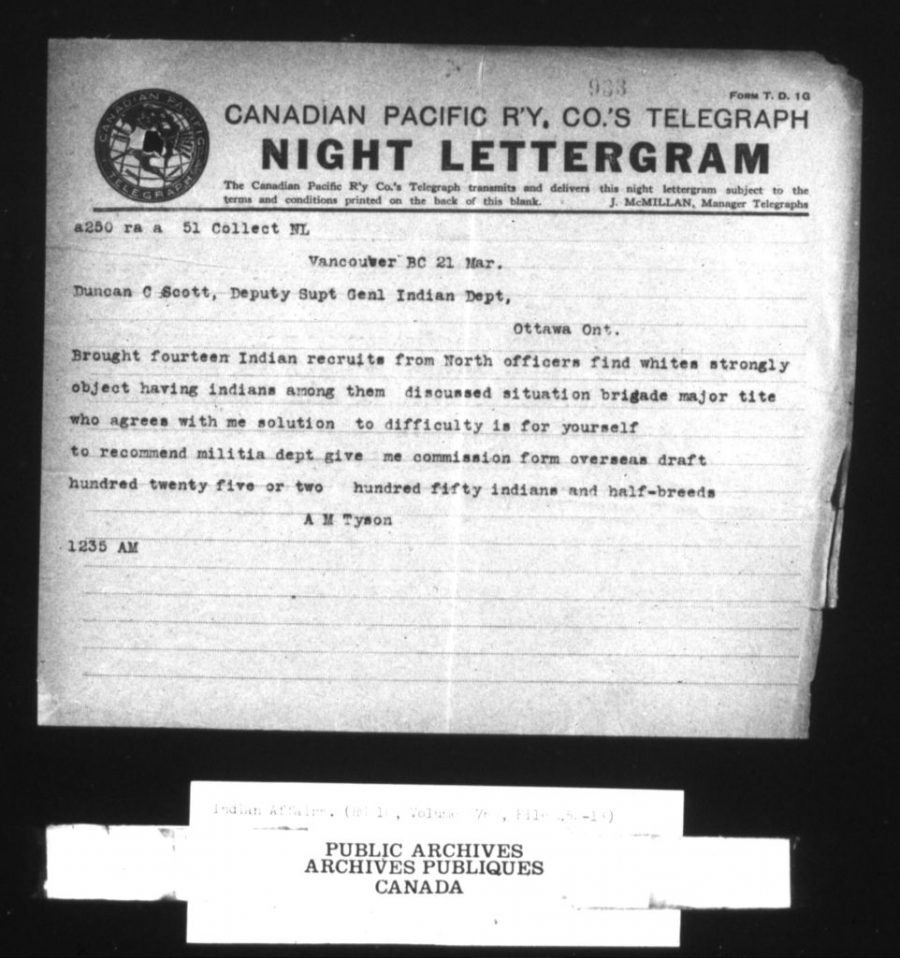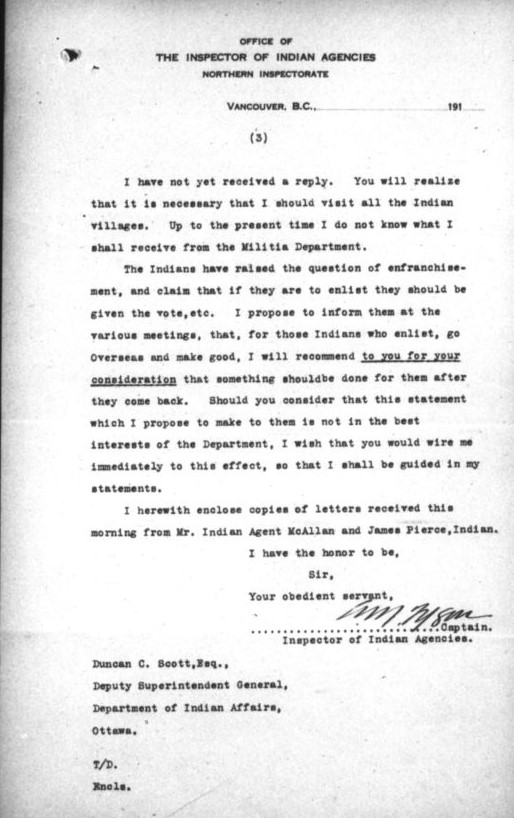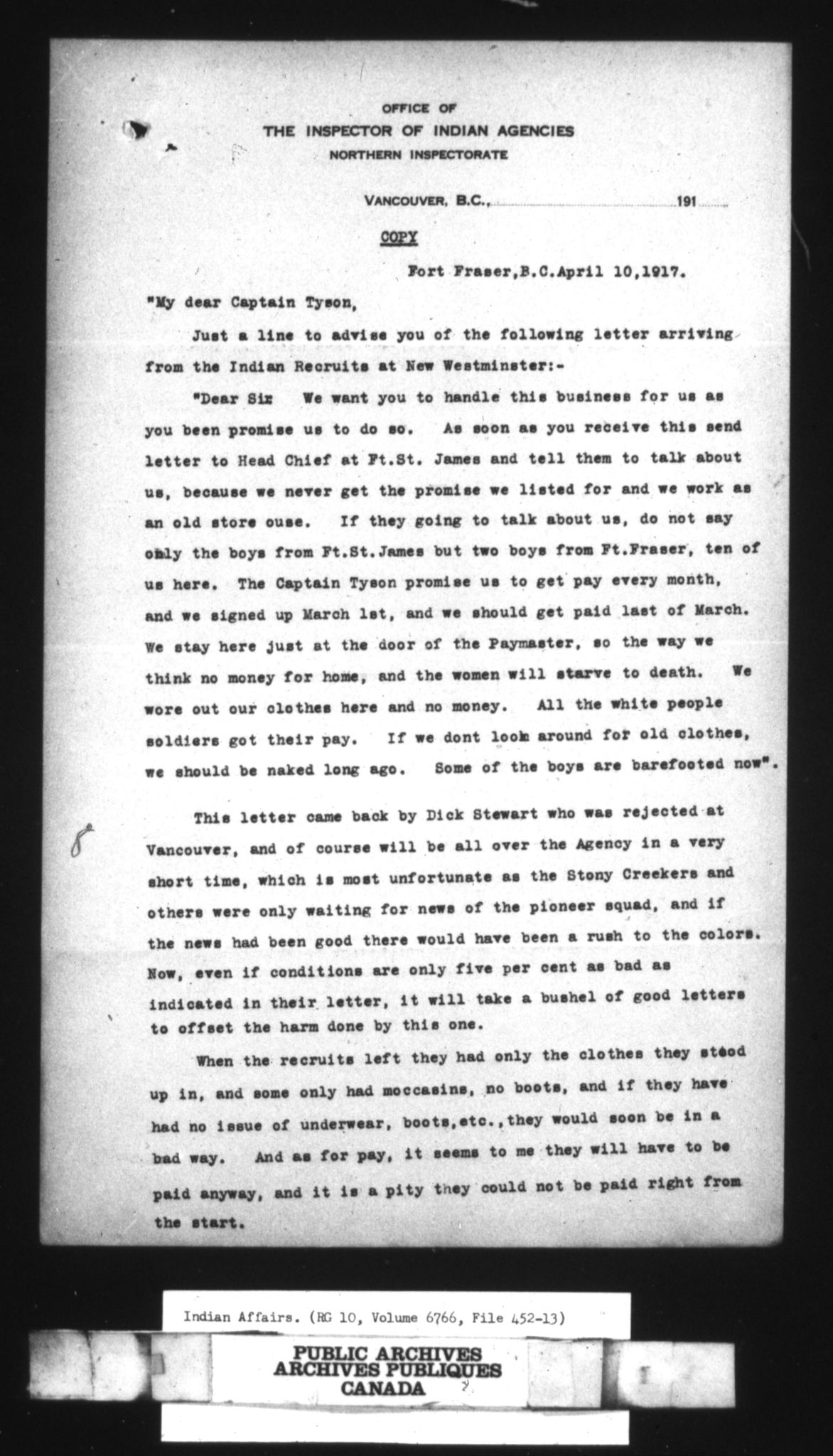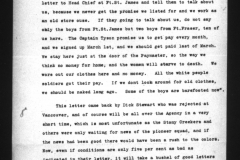After government policy shifted in 1915 to open the doors for Indigenous peoples to enlist, a recruitment strategy to obtain support from Indigenous Nations was formulated.

Here it should be noted that although policy had changed to permit Indigenous enrollment, not every government official had a positive attitude, government attitudes towards Indigenous peoples were still negative. A telegram from A.M. Tyson to Duncan C. Scott stated “officers find whites strongly object having Indians among them.”
The result was a recruitment campaign focused on seeking volunteers to sign up for the Canadian Forestry and Railway battalions. Indian Agent, Capitain A.M. Tyson charged with the task, wrote a circular in January 1917 encouraging Indian Agents to engage support for the campaign from Nation Chief, Missionaries, and Schoolteachers.
Campaign Failure
The campaign failure was noted in the response from BC Indian Agents. Unequal treatment of indigenous peoples both at home and serving overseas were raised.
One letter from an Indian Agent Inspector mentioned, “the Indians have raised the question of enfranchisement, and claims that if they are to enlist they should be able to vote, etc.”
Reasons for a failed campaign range from a number of issues: including: the right to human dignity and legality issues such as the land question unequal treatment of Indigenous soldiers. Inequitable laws towards Indigenous peoples were upheld overseas.
“even though an Indian has enlisted an is in uniform it does not preclude him from being prosecuted…for having liquor in his possession. “W.E. Ditchburn
This coupled with mistrust that Indigenous peoples had in the government’s word did not give Tyson hope that the campaign would result in high recruitment numbers.
This is exemplified in a letter from James Pierce, an who stated,
“”we never get the promise we listed for and we work as an old store ouse. [horse]. We wore out our clothes here and no money. All the white people soldiers got their pay.”
The lack of response other than to classify the issue as nothing more than reactionary as evidenced by correspondence from an Indian Agent who wrote, ”
“ of course I understand well with the size of the howl of an Indian can raise over nothing, the trouble is the harm it will do up here in regard to future recruiting.”
By the turn of the 1917, the need for more bodies to fill the trenches and support the lines became critical. As a result, conscription was enacted. The new law provoked organized unity from Indigenous leaders on Vancouver Island.






